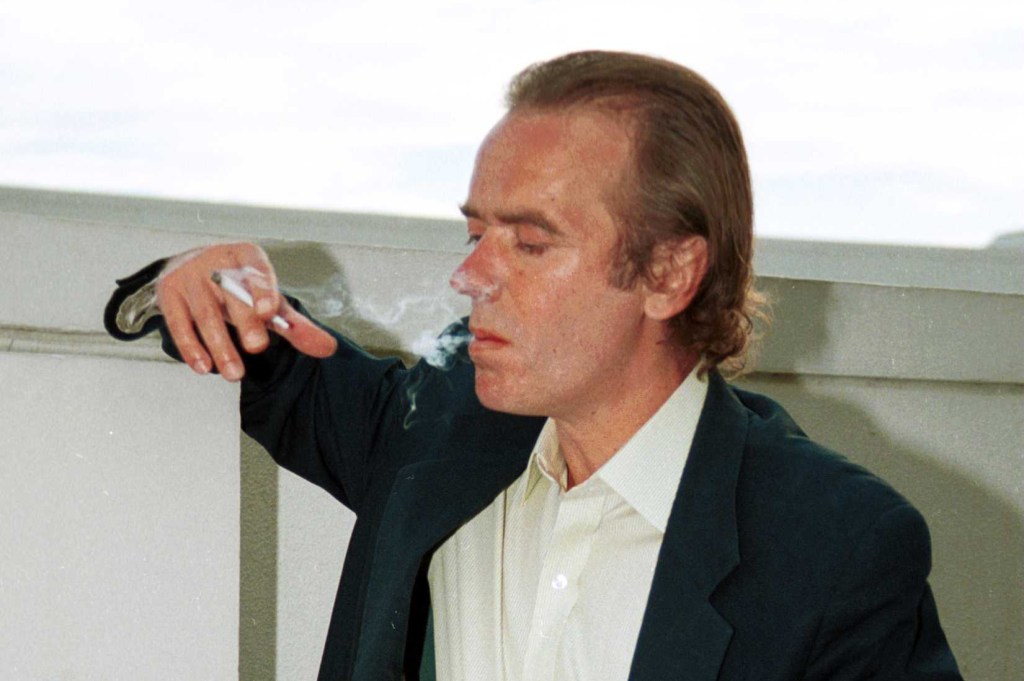Dordogne, France
Down here in southwest France, the ripple effect of the war in Ukraine has become oddly visible. Normally the fields around our house are planted with sunflowers and maize — but not this year. Wheat and barley stretch to the horizon. As you drive around, the roadside fields all bear witness to the marked change. The faltering supply of grain from Ukraine has made French farmers wake up. Grains are the new cash crops and for this summer, at least, the Dordogne will look subtly different.
The awful news of the death of Martin Amis in May prompted a rush of memories for me. Extraordinarily, I first met him when I was seventeen, in Paris,
in 1969. I was in the first year of the sixth form and my friend Charlie Bell and I had the idea of hitchhiking from Inverness in Scotland to the Côte d’Azur, in the fond hope we might meet some French girls on the way. We failed, abjectly — we made it to Paris easily enough but when we reached the start of the main autoroute south we found there were about 400 hitchhikers there ahead of us, all waiting for a ride. We would wait all day in the line but after some days realized we would never, ever arrive at the front of it. It was a Beckettian torment.
Luckily for us we were housed, staying in an apartment on the Île Saint-Louis. A friend of a friend had found us this accommodation. It was a large, eccentric, shambolic place owned by a chain-smoking, intellectual widow called Françoise. Her spare bedrooms were available to any friends and their children passing through. Françoise’s daughter lived there with her boyfriend, both ultra-left soixante-huitards, and when Charlie and I turned up, the other residents included an American girl student studying at the Louvre and an English couple who were staying for a few days, a guy called Martin with his girlfriend, Gully, to whom we were introduced. They were both at Oxford, we were told, both twenty. Over the days we lingered, vainly trying to leave Paris, we all hung out together in the evenings. Françoise cooked us suppers; we went to parties. Eventually Charlie and I caught a train to Grenoble and hitchhiked from there to Juan-Les-Pins without difficulty.
Three years later, at university, I wrote my first (unpublished) novel about that summer of 1969. It was called Is That All There Is? after the Peggy Lee song. Martin Amis and Gully Wells appear in it barely disguised as “Philip” and “Camilla.” A few days ago, I dug out the typescript and reread the Paris segment. When I wrote the novel in 1972 I had no idea who Martin was — though we later met again and became friends — but the portrait of him at that time in his life is surprisingly accurate and was a sudden catalyst to other memories of those few days we unwittingly spent together in Paris. Paris, 1969, came surging back. I gave Martin black hair, for some reason, and noted his fashionable velvet suits and, bizarrely, saw that I had spent a couple of pages detailing our shared enthusiasm for the prog-rock band Soft Machine. He was obviously very tolerant of a callow seventeen-year-old. But then that was what he was like as a person. Open, curious, friendly, kind.
This summer marks the thirtieth anniversary of the inauguration of our southwest France life — one that runs happily parallel to our southwest London one. We bought this decrepit old farmhouse and its fields and woods in the very south of the Dordogne in 1993 and slowly did it up over the years that followed. The great summer rite-of-passage here is the répas des chasseurs — the hunters’ lunch. Our house is surrounded by mature oak woods and the local hunters roam through them in the highly regulated hunting seasons looking for deer, hares, foxes and wild boar. The most elaborate form of hunting, however, is for flights of migrating doves; it takes place over a month or so in autumn. The hunters build high, teetering treehouses in the woods which they occupy silently with their shotguns. These contraptions, called palombières, are positioned right at the oaks’ canopies and, with the aid of tame, tethered doves, the hunters cleverly lure the passing flights down to the treetops where a few of them meet their swift end. “Ce n’est pas un massacre,” I have been told, reassuringly.
Pre-season, in high summer, the families of the hunters gather in our woods for a huge multicourse feast. Trestle tables are laid out for up to one hundred and fifty guests. The men do all the cooking on open fires. Last year we started with aperitifs of punch, whisky and anis, then soup, then tomato salad, then three separate courses of grilled meat — sausage, lamb, and wild boar — then vast amounts of cheese, then tarts and puddings, rounded off with eau de vie and other liqueurs and, somewhat astonishingly, a palate-cleansing sorbet.
Of course, abundant wine and bread are a constant. It is a wholly French experience — we are the only privileged foreigners to be invited. And it is always magical — like being in a film by Eric Rohmer or a novel by Marcel Pagnol. La vie en rose does actually exist, at least for a few hours, in a sun-dappled oak wood in deepest, darkest France.
This article was originally published in The Spectator’s August 2023 World edition.

























